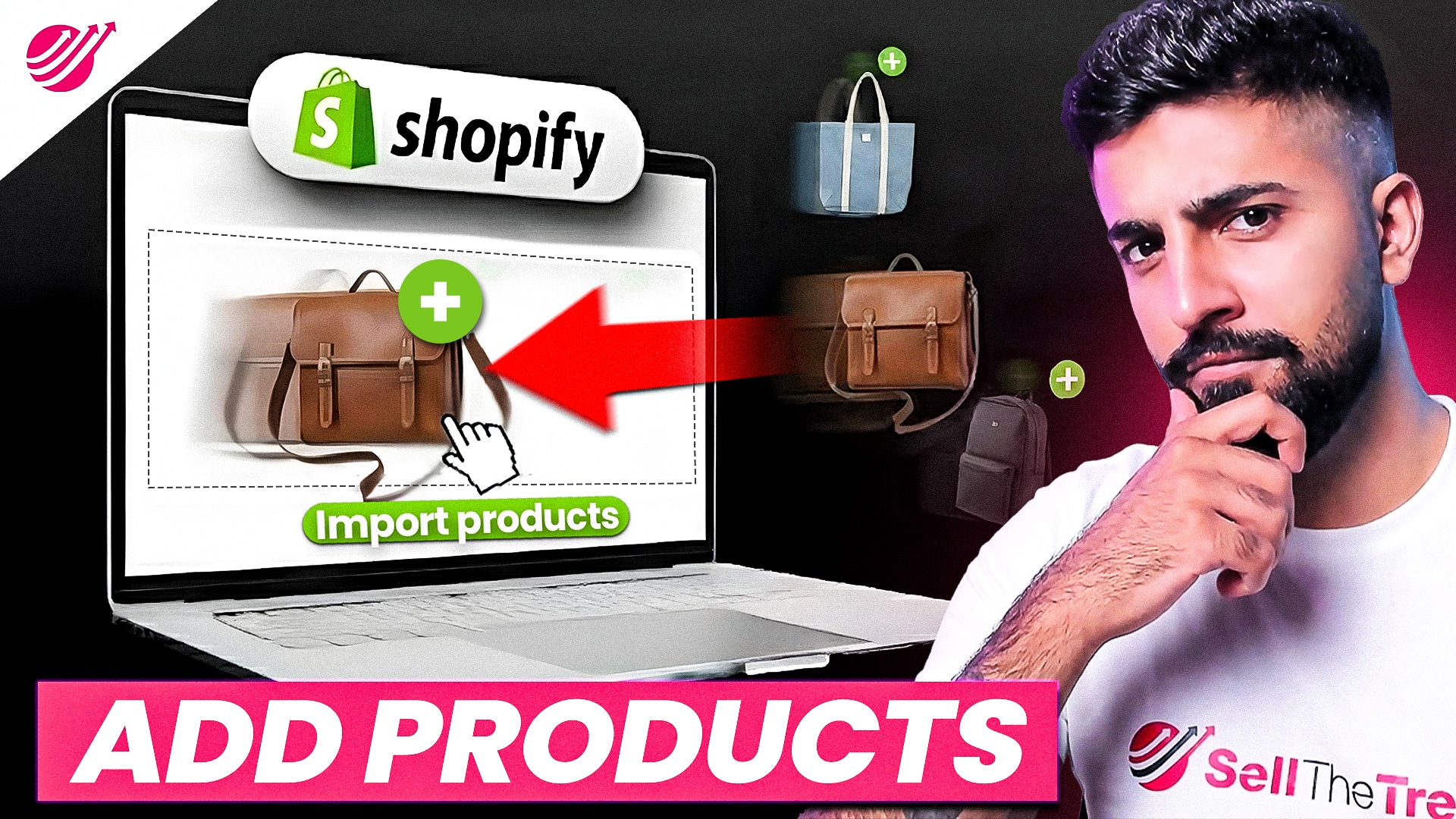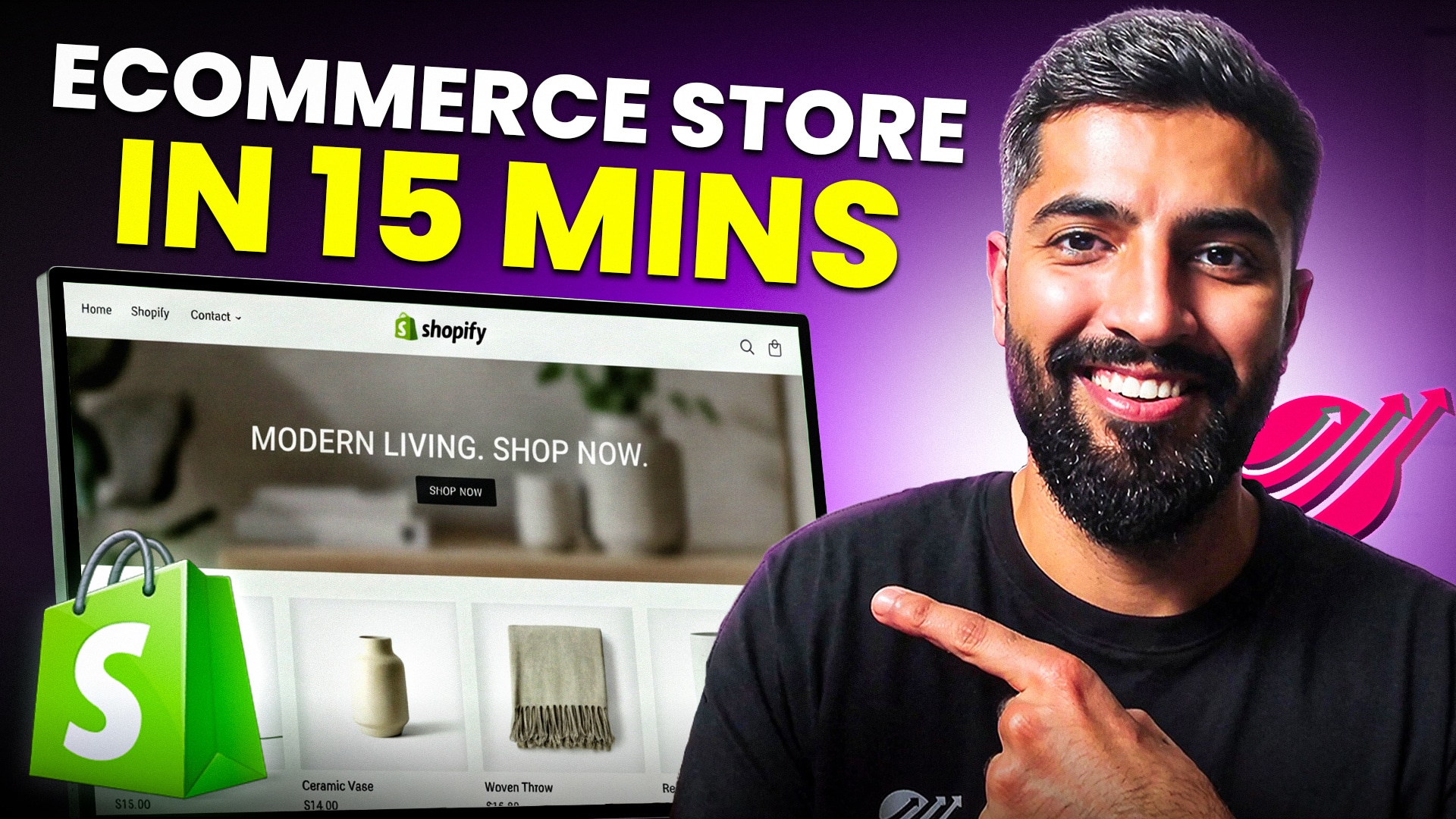eBay Dropshipping 2026: Starter Guide for Beginners
Contents

Want to start an online business with little money? eBay dropshipping is one of the easiest ways to begin, and with tools like Sell The Trend, finding the right products has never been easier. You don’t need to buy inventory upfront or worry about shipping. Just list products, sell them on eBay, and let your supplier handle fulfillment.
We’ll help you learn how to start dropshipping on eBay in 2026 using smart strategies and tools that save time and increase profit. We’ll walk you through the basics, show you how to find winning products with Sell The Trend, and help you avoid the most common mistakes. Let’s dive in.
Key Takeaways
- eBay allows dropshipping only from wholesale suppliers, not retail stores like Amazon or Walmart.
- Profitable dropshipping on eBay requires smart product research and fast shipping suppliers.
- Sell The Trend can help you find winning products and track market trends.
- Starting is low-cost, but scaling may require automation tools and ads.
- Providing great customer service and fast delivery helps build a strong reputation.
eBay Dropshipping With Seamless Integration Inside Sell The Trend

Sell The Trend now lets you plug your eBay account directly into the dashboard, so you can list, sync, and fulfill orders without ever leaving the platform. The setup takes only a few clicks: choose the eBay marketplace you sell on, approve the connection, and you’re ready to import products in seconds.
Once connected, a single “Push to Store” button pulls in every product detail: titles, HD images, variants, and pricing. Behind the scenes, real-time inventory and price synchronization prevent overselling and automatically adjust listings whenever a supplier’s stock or cost changes.

Better still, once the supplier is paid, every eBay order is automatically forwarded to your supplier; tracking numbers are transmitted back to eBay without manual input, allowing you to stay within handling-time metrics and accumulate positive feedback.
Why this matters in 2026
- True policy compliance: Because items come from vetted wholesale partners, you stay within eBay’s dropshipping rules while enjoying prime-like shipping speeds.
- Multi-store control: Manage several eBay shops (plus Shopify, WooCommerce, TikTok Shop, or Amazon) from one dashboard and apply global pricing rules in bulk.
- AI-powered research: Pair the Nexus engine with eBay filters to spot low-competition winners before they appear on the Best Sellers list.
- Hands-free margin protection: Built-in automations raise or lower prices when supplier costs fluctuate, so you never sell at a loss.
- Fast onboarding: Most sellers go from zero to first imported listing in under ten minutes, with 24/7 chat support if you get stuck.
Three-Step Quick-Start

-
Connect Store → In Sell The Trend’s “Store Manager,” click Create/Add Store and pick your eBay marketplace.
-
Import Products → Use Nexus or Trend Explorer, hit Push to eBay, and fine-tune the title or price before publishing.
-
Auto-Fulfill → When an order drops, confirm it in the Orders tab; the system pays the supplier, updates eBay with tracking, and even emails the buyer.
With this integration live, the rest of the guide you’re reading—product research, pricing strategy, reputation-building—gets even easier, because the busywork is gone. Plug it in now, then continue below to master every other step of successful eBay drop shipping in 2026.
Starting Dropshipping on eBay: Quick Answer
Starting dropshipping on eBay is simple: set up your profile, find reliable eBay dropshipping suppliers who ship directly to customers, then list their products on your eBay store at a markup. When a customer buys, you forward the order to the supplier, who handles shipping. You never hold inventory.
To succeed, choose a niche with steady demand, write clear and keyword-optimized listings, and offer fast shipping and easy returns. Use eBay’s tools like Promoted Listings to boost visibility, and always provide excellent customer service to build trust and earn repeat buyers.
Remember, the products you select are what make or break your store. Utilize Sell The Trend’s AI dropshipping platform to find winning products.
How to Start Dropshipping on eBay in 2026?
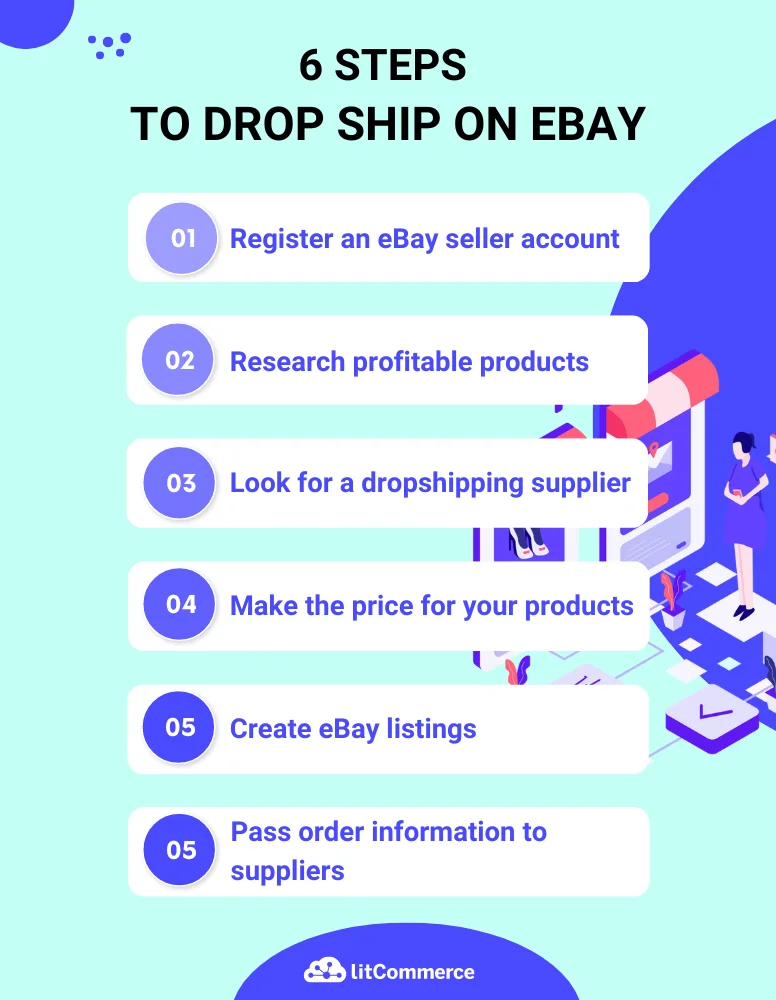
eBay drop shipping is a business model where you sell dropshipping products on eBay without keeping inventory. When a customer buys from your eBay store, you purchase the item from a supplier who ships it directly to them. You don’t handle storage, packing, or shipping.
This makes it a low-cost way to start an online business. You can list items, make sales, and earn a profit by setting a higher price than what you pay the supplier. However, eBay has rules for dropshipping, so it’s important to follow their policies to avoid issues.
Now that you know what eBay drop shipping is, it’s time to get started. Let’s learn the key steps to set up your store, find dropshipping suppliers, and start making sales.
1. Sign up for eBay
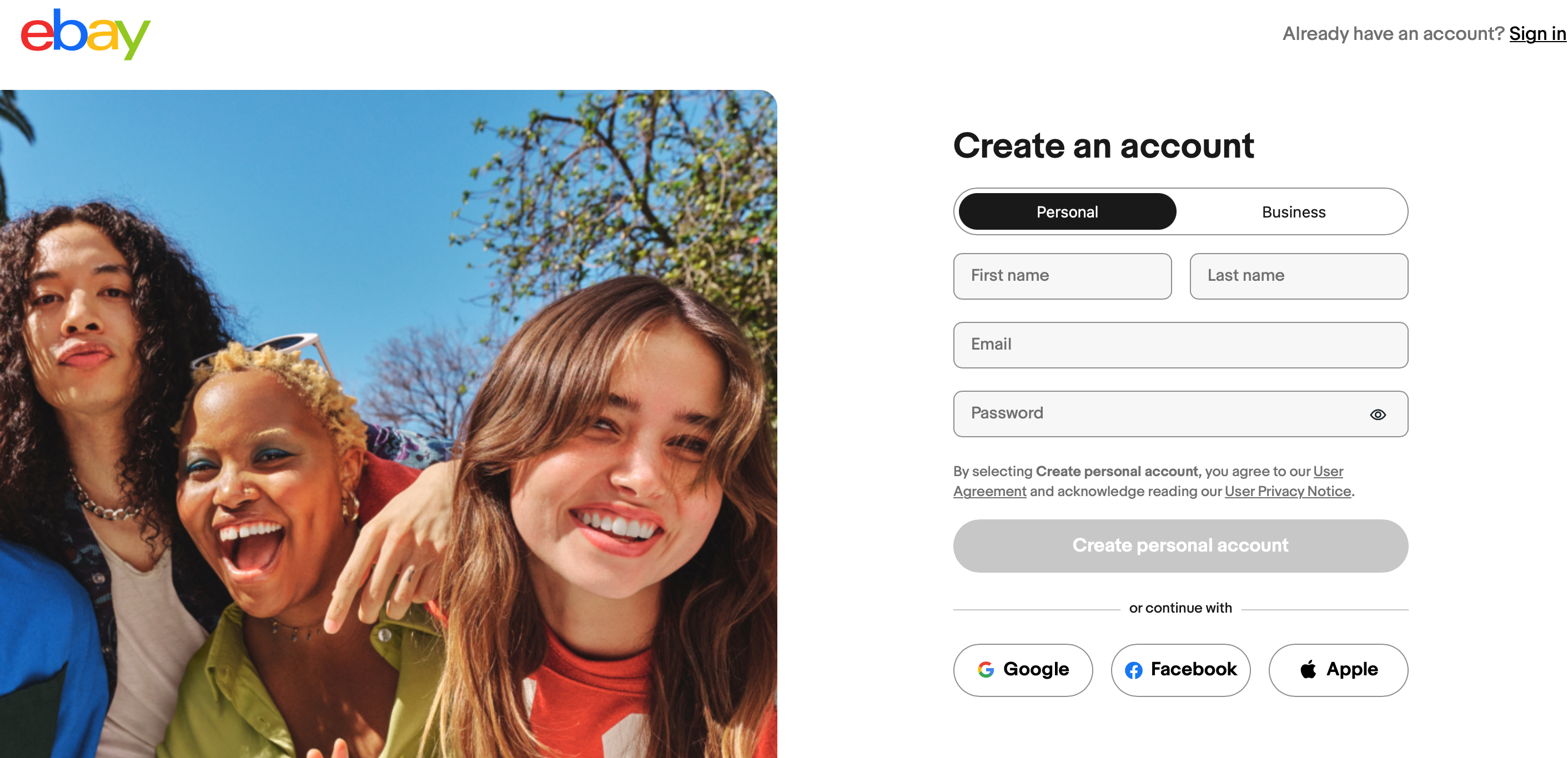
Go to eBay’s website and click on “Register.” You’ll see two options:
- Personal Account: Good for casual selling.
- Business Account: Best for dropshipping.
If you’re serious about dropshipping, choose a business account. It gives you more tools, higher selling limits, and a professional image.
Fill in your name, email, and password. If you choose a business account, you’ll also need your business name and contact details.
2. Set up your seller profile

Once your account is ready, go to “My eBay” > “Selling” and set up your seller profile. Here’s what you need to do:
- Add a profile picture or logo. This builds trust with buyers.
- Write a short business description. Mention what you sell and your commitment to customer service.
- Set up a return policy. A 30-day return policy is recommended. It helps attract more buyers.
eBay will ask you to verify your identity before you can sell. This may include:
- Confirming your email.
- Providing a phone number.
- Verifying your address.
- Adding a bank account for payouts.
Make sure your details are accurate and match your legal documents. If eBay finds any mismatch, it might put restrictions on your account.
3. Set up payments

To receive payments, you need to link a bank account to eBay. eBay uses eBay Managed Payments, meaning buyers can pay via credit card, PayPal, Apple Pay, Google Pay, and more.
Go to “Payments” in your seller dashboard and add your bank details. eBay will send a small deposit to verify your account. Once verified, you’re ready to get paid.
New sellers have selling limits. Usually, you can list 10 items or $500 worth of products per month. These limits will increase over time based on your performance. To raise your limits faster:
- Make quick, successful sales.
- Ship on time and provide tracking numbers.
- Get positive reviews.
If you’re doing well, eBay will automatically raise your limits. You can also request a limit increase after 30 days.
4. Find Winning Products

You need items that are in demand, have low competition, and offer good profit margins. If you pick the wrong products, you’ll struggle to make sales.
But what makes a product winning?
A winning product has these qualities:
- High Demand: People are actively searching for it.
- Low Competition: Not too many sellers offering the same item.
- Good Profit Margins: The difference between your buying and selling price should be worth the effort.
- No Brand Restrictions: Avoid trademarked or copyrighted products.
- Lightweight & Small: Lower shipping costs and fewer damages.
- Solves a Problem: People buy solutions, not just products.
Use eBay’s Trending Tools
eBay provides built-in tools to help you find trending products:
- eBay Terapeak Research Tool (Free for sellers) – Shows sales trends and competition.
- eBay Best Sellers Page – Highlights popular items in different categories.
- Completed Listings Search – Helps you see past sales data.
To access Terapeak, go to “Seller Hub” > “Research” and enter keywords related to products you’re considering. It will show you the average price, sales volume, and competition level.
Spy on Competitors
Look at successful dropshippers on eBay and see what they are selling.
- Search for keywords like “fast shipping,” “hot item,” or “best seller.”
- Look at sold listings to see how often an item sells.
- Check reviews to see what buyers like or dislike about certain products.
By analyzing their listings, you can spot trends and price your items competitively.
5. Use Sell The Trend for Product Research

If you want a faster and more data-driven way to find winning products, Sell The Trend is a great tool.
What is Sell The Trend?
Sell The Trend is a research platform that helps dropshippers find trending products. It scans marketplaces like AliExpress, Amazon, and eBay to show you what’s currently hot.
How to Use Sell The Trend for eBay Dropshipping Business
- Go to Sell The Trend and sign up.
- Use the “Trend Explorer” to see what’s currently popular.
- Check the Nexus Product Research Tool – It shows how often a product sells and where it’s trending.
- Look at the Dropshipping Stores Database – This lets you see what successful sellers are listing.
- Use the Profit Calculator to check your potential margins.
Sell The Trend saves time and effort by providing ready-to-sell product ideas. Instead of guessing, you can use data to make smart product choices.
Don’t list hundreds of products at once. Instead, start small and test:
- List 10-20 products in different categories.
- Use clear, keyword-rich titles to get noticed.
- Adjust prices based on competitors’ pricing.
- Track which items get views and sales.
6. Select an eBay Drop shipping Supplier
Your supplier affects product quality, shipping time, and customer satisfaction. If you pick the wrong one, you’ll deal with delays, refunds, and bad reviews.
Here’s how to find a reliable supplier for eBay dropshipping.
What to Look for in a Supplier
A good supplier should have:
- Fast Shipping – Aim for 7-15 days max (faster is better). Avoid long shipping times that frustrate customers.
- Quality Products – Low-quality items lead to negative reviews and returns.
- Competitive Pricing – Your cost should allow at least a 20-30% profit margin.
- Good Stock Levels – Avoid suppliers who run out of stock frequently.
- Reliable Customer Support – They should respond quickly to order issues.
- Tracking Numbers Provided – This is a must for eBay’s seller policies.
7. Price Your Product
Setting the right price is key to a profitable dropshipping business. The price is too high, and no one buys. The price is too low, and you won’t make money. The goal is to stay competitive while keeping a good profit margin.
Here’s how to price your products the right way.
Understand eBay’s Fees
Before setting a price, you need to know how much eBay takes from each sale.
eBay charges:
- Final Value Fee – Around 12-15% of the total sale price (including shipping).
- Insertion Fee – Free for the first 250 listings per month. After that, $0.35 per listing.
- PayPal or eBay Managed Payments Fee – Usually around 2.9% + $0.30 per transaction.
So, if you sell an item for $50, eBay might take $6-8 in fees. Always include these costs in your pricing.
8. Calculate Your Profit Margin
To stay profitable, use this formula:
Selling Price = Product Cost + eBay Fees + Shipping + Desired Profit
Example:
- Product Cost: $20
- eBay Fees (12%): $6
- Shipping Cost: $5
- Desired Profit: $10
Final Price = $41
This way, you cover all costs and still make money.
Research Competitor Pricing
Look at what other sellers are charging for the same or similar products.
- Search for your product on eBay.
- Filter by “Sold Listings” to see actual sale prices.
- Find a pricing sweet spot – not the highest, but not the lowest.
If your price is too high, offer better images, a stronger description, or free shipping to justify it.
Test & Adjust
Pricing isn’t set in stone. If your product isn’t selling:
- Lower the price slightly to match competitors.
- Try offering a small discount for a limited time.
- Use Promoted Listings to boost visibility.
9. Create Your Listings
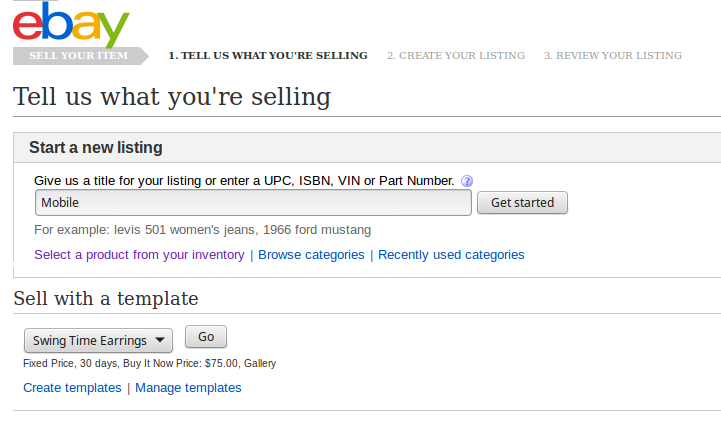
Your eBay listing is what sells the product—if it’s weak, even the best item won’t move. Focus on clarity, keywords, and buyer trust.
Use a clear, keyword-rich title under 80 characters. Be specific about what you’re selling, but avoid fluff, all caps, and clickbait.
Write a short, persuasive description. Explain what the product is, list key features briefly, and include shipping and return info.
Upload high-quality images. Use at least 5 clear, well-lit photos showing multiple angles. A white background works best.
Fill in item specifics (brand, color, size, etc.)—it boosts your visibility in search.
Offer fast shipping and a 30-day return policy. Free shipping helps convert.
Use eBay’s built-in promotions:
-
Promoted Listings, discounts, or Best Offers can drive more views and sales.
10. Build a Good Reputation
Your reputation on eBay directly impacts your sales. Buyers trust sellers with high ratings, positive reviews, and excellent customer service. If you don’t manage your reputation, you risk low visibility, fewer sales, and even account suspension.
Here’s how to build and maintain a strong eBay reputation.
Deliver Excellent Customer Service
Great customer service leads to positive feedback and repeat buyers.
DO:
- Respond quickly to buyer messages (within 24 hours).
- Be polite and professional in all communication.
- Offer helpful answers and resolve issues fairly.
DON’T:
- Ignore messages.
- Get defensive with complaints.
- Make false promises about shipping or returns.
Tip:
Use the eBay app to get notifications and respond faster to buyers.
Ship Orders on Time
Late shipments lead to bad reviews and account restrictions.
DO:
- Choose reliable suppliers with fast shipping.
- Ship within 24-48 hours if possible.
- Always provide a tracking number to buyers.
If a delay happens, inform the buyer immediately and offer a solution.
How to Test a Supplier Before Selling?
Before committing, test the supplier by:
- Ordering a sample product – Check quality, packaging, and shipping time.
- Checking reviews – Read what other dropshippers say about them.
- Contacting customer support – Test their response time and professionalism.
- Asking for a tracking number – Ensure they provide tracking for every order.
Avoid These Supplier Mistakes
- Relying on one supplier – Always have backup options.
- Choosing slow shippers – Long shipping times = bad reviews.
- Ignoring quality control – A few bad reviews can ruin your eBay reputation.
- Not checking return policies – Make sure your supplier accepts returns.
As your eBay dropshipping business grows, you may find that maintaining reliable systems and secure operations becomes increasingly important. Some sellers choose to work with external IT service providers such as Orange Crew, which offers managed IT support, cybersecurity oversight, and cloud-based solutions for small businesses. These types of services can help reduce technical disruptions and provide more consistent system performance. While not necessary for new sellers, considering additional technical support early can help prevent avoidable issues later on.
Conclusion
eBay dropshipping is a low-risk, high-potential way to launch an online business, especially when you use data-driven tools like Sell The Trend to find winning products and reliable suppliers. You don’t need to invest in inventory, and with the right setup, you can start making sales quickly.
Success comes down to choosing the right niche, offering fast shipping, and keeping customers happy. Start small, test what works, and scale with confidence. With smart tools and a solid business plan, your eBay dropshipping store can evolve into a profitable, long-term venture.
eBay Dropshipping: FAQs
If you’re new to drop shipping, you likely have many questions. Here are answers to the most common ones.
1. Is eBay Dropshipping Allowed?
Yes, but with rules. eBay allows dropshipping only if you source products from a wholesale supplier. You cannot list items from another retail site like Amazon or Walmart.
If you violate this rule, eBay may lower your listings in search results or even suspend your account. To stay compliant, work with verified suppliers who support the dropshipping model.
2 . Is eBay dropshipping still profitable?
Yes—done correctly, the business model can still return 15-30% net margins for disciplined eBay sellers who select in-demand items and control costs. Demand for online bargains keeps growing, and many top eBay stores now mix private-label items with dropship SKUs to stay competitive.
3 . How do I dropship on eBay without getting banned?
Follow eBay’s official dropshipping policy: source only from wholesale suppliers and ship within the handling time you advertise—never route orders through a competing retail site like Amazon or Walmart. Keep tracking numbers active, resolve cases fast, and maintain on-time delivery and defect metrics in the green; accounts that slip below standard risk suspension.
4 . What are the best dropshipping products on eBay?
Lightweight, non-branded goods in high-turn categories—such as Home & Garden gadgets, phone accessories, health & beauty tools, hobby collectibles, and fitness gear—sell the fastest and carry healthy mark-ups.
5. Is Dropshipping on eBay Worth it?
Yes, but it depends on how you do it. The dropshipping business is competitive, but many sellers make profits by finding winning products and offering safe delivery.
Pros:
- No need to buy inventory upfront.
- You can run it from anywhere.
- Low startup costs compared to an online store.
Cons:
- High competition.
- Lower profit margins compared to private stores.
- eBay’s strict policies can limit your growth.
Success comes down to choosing the right suppliers and using eBay dropshipping tools to automate tasks.
6. How to Dropship on eBay for Free?
You can start without upfront costs, but you still need to pay eBay fees when you make sales. To begin for free:
- Sign up for an eBay seller account (no cost).
- Use free product research tools to find trending items.
- List items with a markup to cover fees and profits.
- When you get a sale, order from your supplier and have them ship directly to the customer.
While you don’t need to invest in stock, using a dropshipping platform can help you scale faster.
7. How Much Investment Is Required for eBay?
You can start with as little as $50 to $100 for listing fees and small ads. But as you grow, you may need:
- $15 to $50/month for premium eBay dropshipping tools.
- Extra budget for promotions to boost visibility.
- Money for refunds in case of issues.
The more you invest in research and automation, the faster your business can grow. Smart eBay dropshippers reinvest profits to scale.






